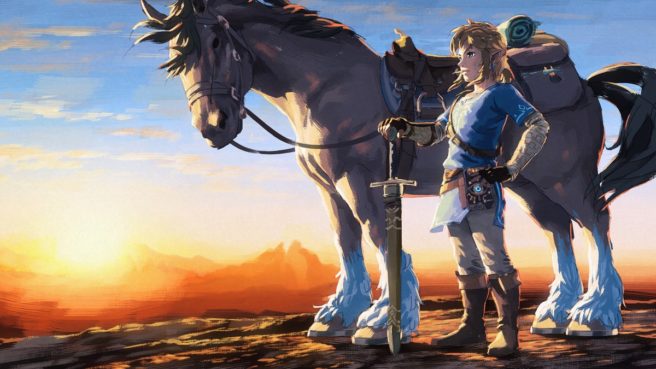Zelda: Breath of the Wild director on the game’s reaction, timeline placement, approach to Ganon, more
Game Rant was recently able to interview Zelda: Breath of the Wild director Hidemaro Fujibayashi. Fujibayashi weighed in on the game’s early reaction, timeline placement, motion control puzzles, inspiration for the Divine Beasts, early concepts, and why Ganon doesn’t speak.
You can read up on these excerpts from the interview below. For the full discussion, head on over here.
On whether he’s surprised by the game’s reaction…
“Yes we are. The entire staff did all they could to provide a polished product but even so the better-than-imagined reception has surprised us. We’re especially pleased to see all the inventive things people are trying and how much they are enjoying exploring the world as this is the gameplay we were aiming for.”
On where the game sits in the timeline…
“It takes place in an age long, long after any of the titles released to date. It is the most recent age. And because of this we believe players will be able to easily immerse themselves in the game. Of course, regardless of the time period, the story does unfold in Hyrule so for those who’ve played other titles in the series there will be a lot of recognizable places to enjoy.”
On how some players have been reacting negatively to the motion control puzzles…
“We prepared a lot puzzles and challenges with a variety of game play type and so I imagine there are some players who might find some of that not to their liking. However, and this is not only limited to puzzles, there are some unexpected ways to play sleeping beneath the surface that are a lot of fun and we really hope people challenge themselves to discover them.”
On the concept for the Divine Beasts…
“These came from an idea we had to solve two challenges we were facing at the time in terms of game design specifications; we wanted to create four moving dungeons which made use of the game physics, and we wanted to strengthen the romance of exploring a large overworld (the joy of discovery). The idea of having these huge mysterious objects, which in reality contained large dungeons, moving about and drawing players toward them seemed interesting.”
“As far as the design motif is concerned we drew inspiration from the divine beasts in Chinese mythology said to protect the four compass directions; the azure dragon of the east, the vermillion bird of the south, the white tiger of the west, and the black tortoise of the north. For the motif of each individual Divine Beast we took into consideration the users’ familiarity with the animals chosen, the ease with which we could make the odd sizes and movement appealing, the ease with which we could capture the users’ attention, and how to a capture the mystique (puzzle) of whether the beasts were friend or foe.”
On early concepts for the game…
“In reality we didn’t start from the concepts of “open-air” or “returning to the essence” we just wanted to make a game in a big, continuous world focused on exploration and discovery. Early on while considering these concepts “open-air” and “returning to the essence” were the words that seemed to fit the ideas best, and they became the vocabulary with which Mr. Aonuma and the staff discussed them. You progress through the world, see interesting terrain and other elements, create hypotheses and expectations about the things you see, and experiment. You try something and you get the reaction you were envisioning. After repeating this for a time the player grows, that’s the cycle. That sort of experience is the real pleasure, the essence, of Zelda and from the beginning we really just wanted to create a game where that could be savored again and again, that was our guiding principle.”
On why Ganon wasn’t given a voice / kept as a force of nature…
“When we were imagining both the scenario and the gameplay we didn’t feel either required that Ganon be voiced this time around. On the scenario side he exists as an overwhelmingly powerful force of evil, and on the gameplay side he’s a formidable enemy to combat; both of these functions are the results we were seeking.”
